Protest Textiles, Costume, and Craftivism in Belarus, 2020–2021, 2021
Los Angeles
From forebears’ ages, long since gone,
A Heritage has come to me (…)[1]
Yanka Kupala (1918), trans. Vera Rich
–– Do Belarusians have a sense of style in general?
––As protests have shown, we do! Simple: limit the color palette to just red, white, and black. Stick to this like an ascetic, and the image will already be nice. Our ancestors had what it takes, and this festive and essential color combination is just perfect. When you see our marches from the air, their colors, you realize that we’ve got taste. In the end, we’ve got it, and the best thing is not to curate or control anything.[2]
Mikhail Gulin, 2021
How did the Belarusian protesters choose their colors: white, red, black? According to Mikhail Gulin, this color combination comes from the heritage culture of traditional embroidery and textiles (Katsialovich 2021). This essay explains the new protest narrative from Belarus through traditional embroidery and textiles, along with its aesthetics and social choreography.
Since August 2020, the protest cultural production that has emerged from Belarus is truly unprecedented in its scale and includes but is not limited to handmade flags, protest signs, music, poetry, theater, street art, as well as performances and art disseminated in the digital sphere. The entry provides an overview of a protest performance of a new kind, the one devoted to textiles, which focuses on three categories: flags, costume, and embroidery. The selection of artwork is based on Chrysalis Mag’s ongoing chronicle of protest art from Belarus, which curates and archives Instagram accounts. In the world of unstable digital media, the materiality of these textiles offers solid evidence of the labor done traditionally by women and passed down from generation to generation. It also provides a glimpse into the new identities and international narratives emerging in the country.
Of all protest textiles, flags are unquestionably the most prominent and prolific. Designed in 1918, the original flag of the Belarusian People’s Republic consisted of a red band on a white field. After the Soviet Union’s collapse in 1991, this flag was chosen as the national flag of the new, independent Republic of Belarus. Even though Aliaksandr Lukashenka himself had his first inauguration under the white-red-white flag, in 1994, he pushed for the return of the old Soviet insignia, i.e., the current official red-green flag, which also features a traditional ornament. Henceforth, the original historical white-red-white flag and “Pahonia” coat of arms became the symbol of Lukashenko’s opposition.[3] In summer 2020, both flags were used by protesters side by side to emphasize national unity (Fig.1).
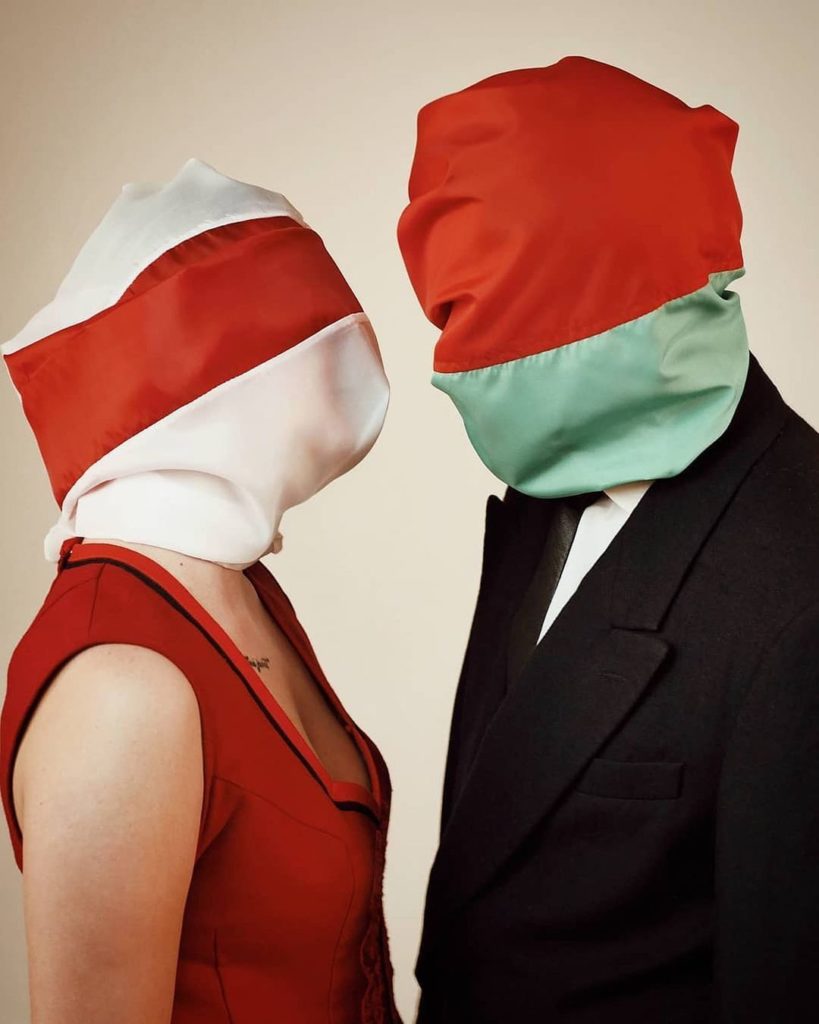
The white-red-white flags returned triumphantly in August 2020, surprising even Belarusians. While some people went out on the streets with their old handmade flags from the 1990s (Fig.2), the signature feature of the contemporary protest movement were the long flags made by the protesters for the occasion, as this one carried in the town of Hrodna on August 14, 2020, or the 1,000 feet flag used by the Belarusian diaspora in Vilnius, Lithuania on March 25, 2021.
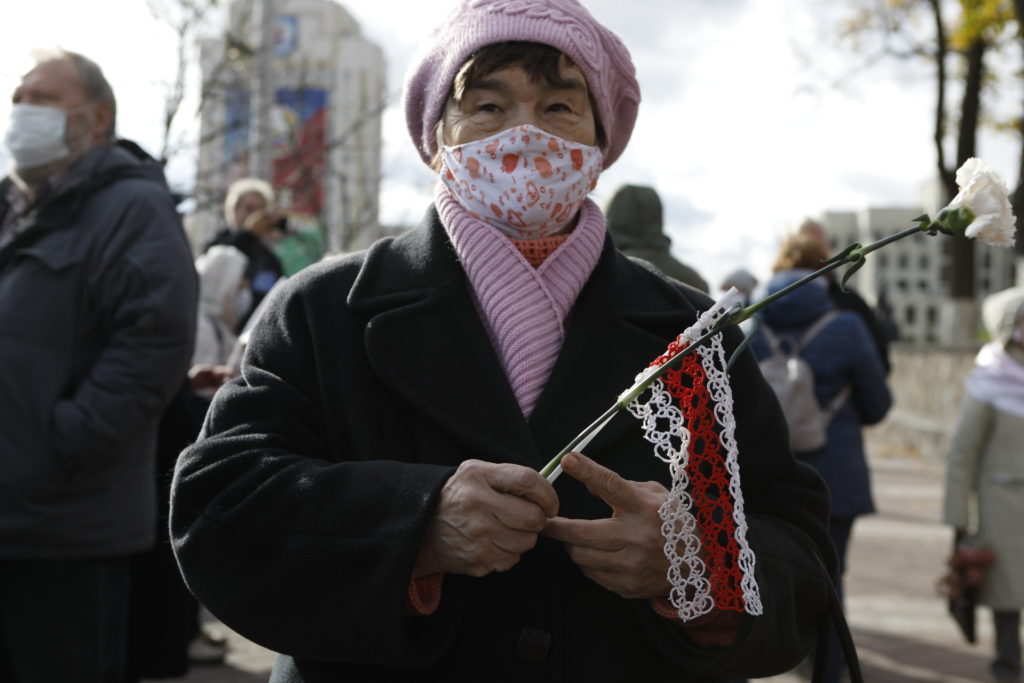
In addition, every Minsk neighborhood and other towns in Belarus designed their own flag, and the newly created virtual protest flag museum counts approximately 650 items. The flags were first designed digitally and then printed on fabric. Artist and designer Vladimir Tsesler took an active part in the design process, posting his new designs on his Instagram account. Belarusian diaspora members in the US also carried out their own initiative, launching in January 2002 a unique journey of the Belarusian flag, signed by Sviatlana Tsikhanouskaya, the leader of the Belarusian opposition in exile. The flag’s itinerary became a subject of a separate Facebook page. The ease of producing and disseminating the flag led to its wide distribution, ranging from hand sewing to commercial printing. During the protests, Belarusians discovered that anything could be made into a flag or become symbolic, from a white and red ribbon tied on a fence, a white cat or dog wrapped in a red scarf, to orange streaks in the sky at sunset.They also discovered that the flag could be rendered conceptually by indicating the colors in black and white print (Fig.3) or simply signaling the colors with numbers (Fig. 4).
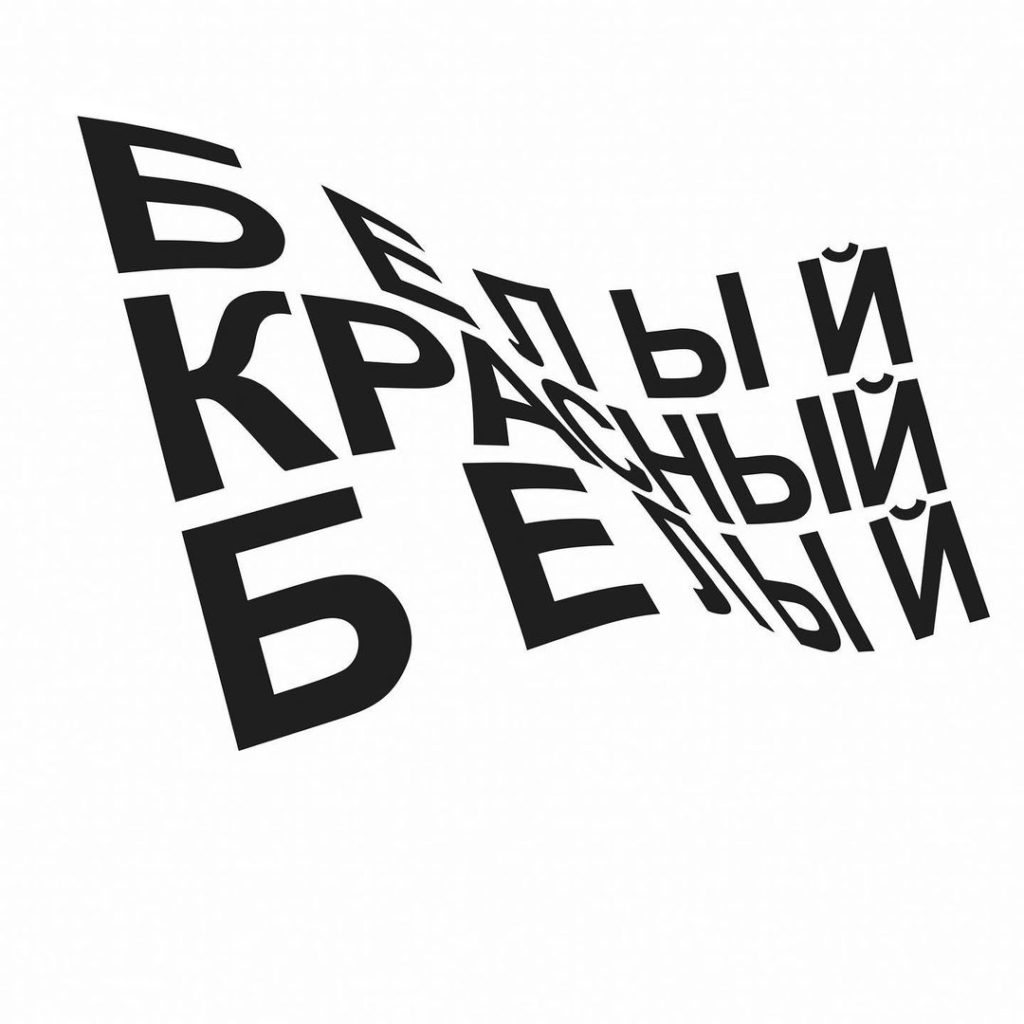
Vladimir Tsesler. Vovatsesler White, Red, White. February 5, 2021. https://www.instagram.com/p/CK7NzktnfiY/ 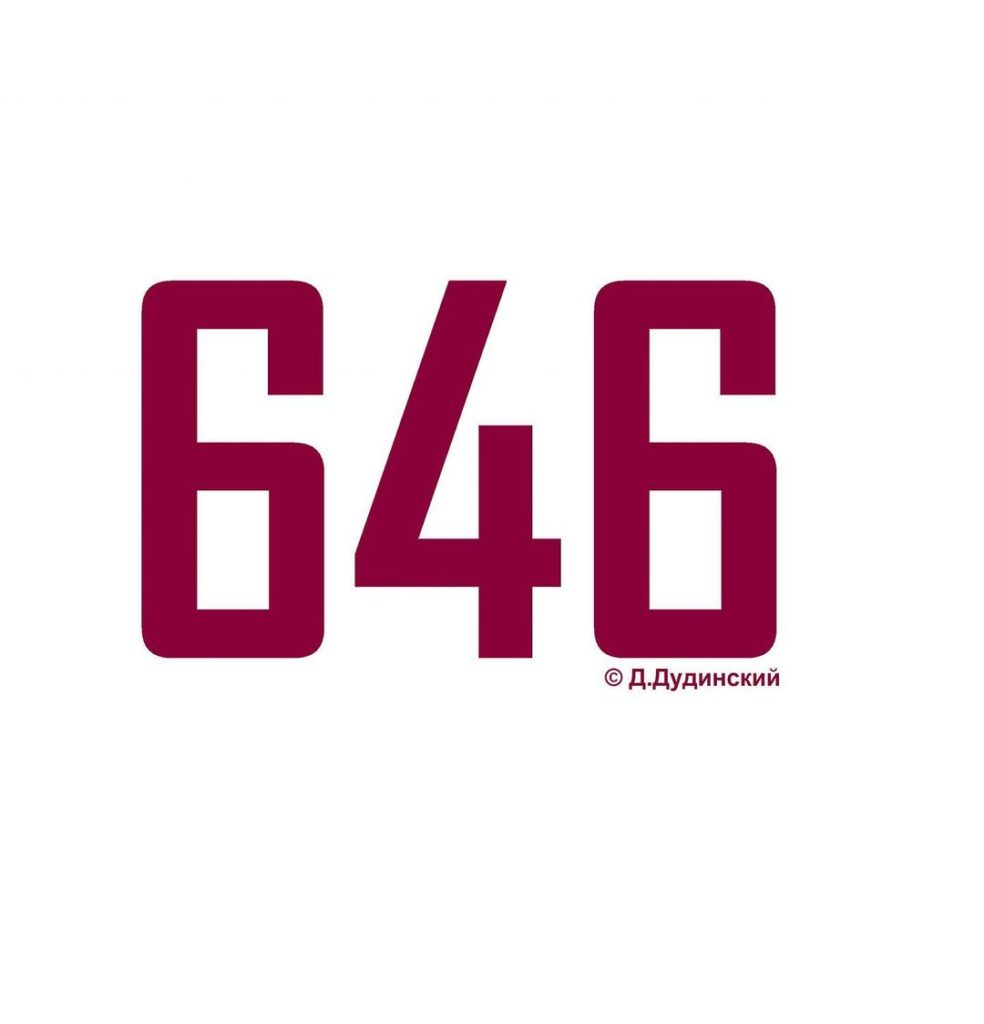
@dudinski_denis May 5, 2021 https://www.instagram.com/p/COfyH-mnPF3/
Other formal experiments included draping it around the Soviet statues, creating land art (Fig. 5), or freezing it in the ice (Fig. 6), making it difficult for the government employees to remove.
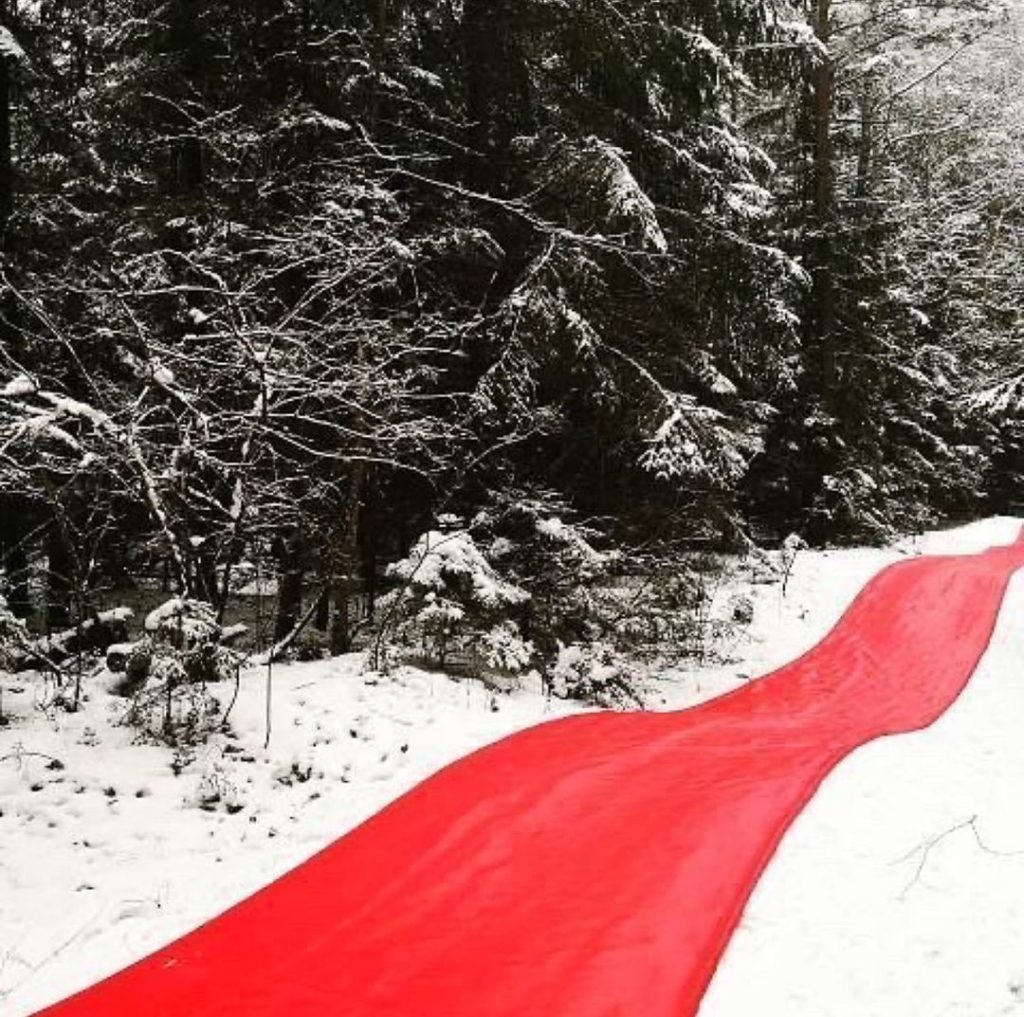
@godofbelarus December 16, 2020 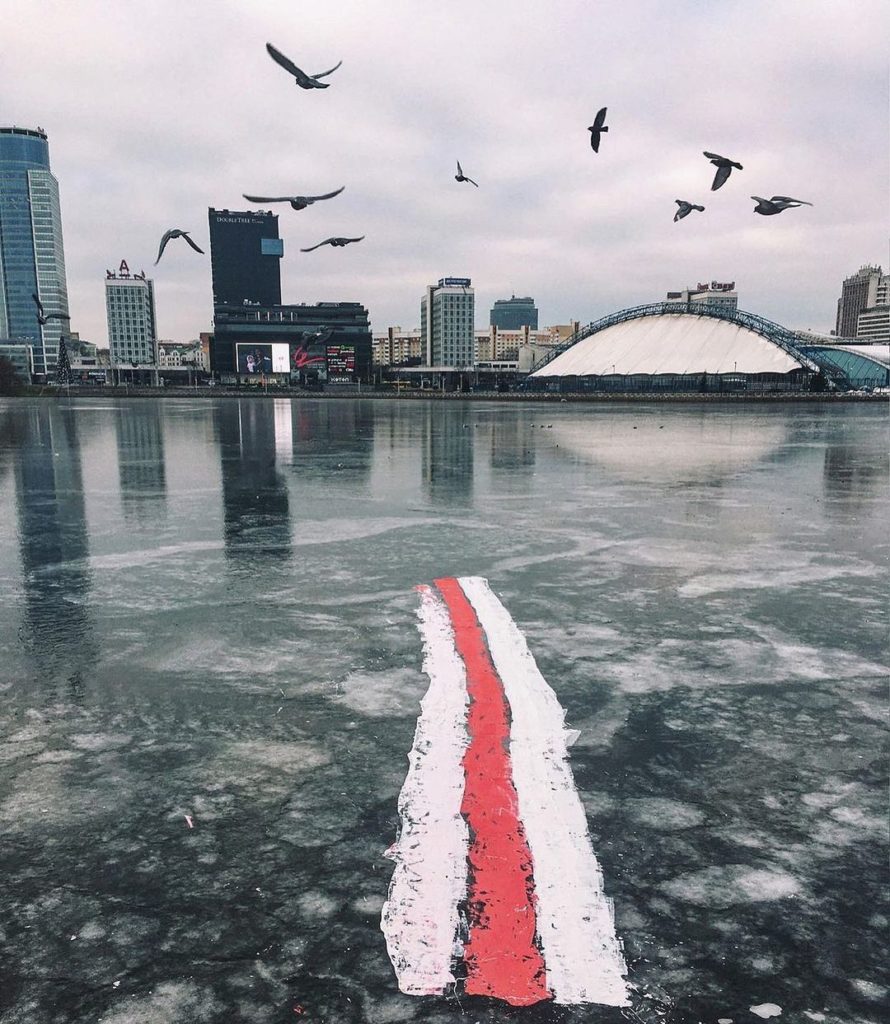
@belsat December 9, 2020
The flag, held by protesters or worn around their shoulders, remains an essential attribute of protest performances that by now are described as flickering protests––isolated decentralized actions focused on creating video content for Telegram channels. Despite the regime’s efforts to cement its version of the flag, the white-red-white flags are there to stay as a symbol of the new Belarus.
The costume, the second most crucial element of protest, became a powerful performance for Belarusian women.[4] Designer Nasta Vasiuchenka hinted at this trend on her Instagram account on September 12, 2020: “Our weapons are our outfits” (Fig.7).
Even though the streetwear itself did not incorporate ethnic ornaments or embroidery, the color scheme of the Belarusian protest costume is reminiscent of the country’s traditional white-red-black embroidery pallet, as if the city were to be turned into a giant canvas for a textile performance to take place. In response to the violence of August 9-11, 2020, women in white appeared on the streets of Minsk and other Belarusian cities, standing in solidarity chains (Fig.8). While white is a symbol of emancipation for women, it is also a symbol of peace, as the flowers held in their hands indicated. Flower Power embroidered t-shirts were posted on Nasta Vasyuchenka’s Instagram account, illustrating the asymmetrical reaction to torture and state violence in prisons (Fig 9). Later protests featured protest wear in white and red (Fig 10) and red and white umbrellas. Women wearing only red appeared on social media at the end of winter in connection with the ancient Slavic rite of Calling of the Spring that is popular among Belarusians (Fig. 11). As the government’s repressions intensified in March 2021, women in black with red ribbons wrapped around their wrists appeared in Minsk (Fig.12). The processions of women in black continued throughout March and April, culminating in commemoration of the Chernobyl accident on April 26, 2021 (Fig 13). In celebration of the Eastern Orthodox Easter on May 2, women once again took to the streets in bright multi-colored outfits, despite the high probability of arrest (Fig 14). Streetwear has also been subject to costume design, with Tasha Kotsuba creatinga series of costumes in white, red, pink, and black (Fig. 15–18). It was Kotsuba’s white costume juxtaposed against the background of the Soviet monumental architecture that became the cover of the album titled The Story of a Real Human (2020) ( https://band.link/27VjT ). Written by a young Minsk-based musician who goes by her stage name sestra, Prelude, the first song in the album, communicates a forceful message about taking up arms. Thus, the Belarusian protest streetwear shifted from being metaphorical weapons to receiving a very concrete performative expression. It is important to remember that these developments occur in a country where wearing socks of the wrong color could get you imprisoned, let alone wearing a costume in the national colors and walking the streets in groups.[5]
If the protest costume’s color palette is influenced by traditional culture, facemasks or balaclavas reflect the issues of safety and anonymity associated with the proliferation of facial recognition technology. Protesters wear masks as an essential part of their costumes. The Balaclava made its debut with Pussy Riot in 2012 in their performance of Mother of God, Drive Putin Away. Since then, it has played an essential part in the Belarusian protest. In this photograph taken by Violetta Savshits, we see a woman wearing a silky pink balaclava and holding a sign reading “Balaclava turned inside out” to protest the black balaclavas worn by police enforcement officers (Fig 19). A piece by Lera Zhdanovoch titled Skiing Mask of a Monkey posted on Instagram on October 31, 2020, reads as an allusion to Guerilla Girls, a feminist group founded in New York in 1985 (Fig. 20). The contemporary artist continues to explore the identity and experiment with a variety of materials when creating masks. Dasha Sazanovich, also known as sheeborshee, designed a new series of transparent masks titled Balaclava for the Honest (2020). Similarly, Tasha Kotsuba uses semi-transparent materials for her costumes, including pearls embroidered around the mouth opening (Fig. 21). She uses jewelry similar to the But the Crime is Beautiful… Hoods series by American artist Lauren Kalman (2014-2016) (Fig 22). Belarus had a technology-driven protest movement from solid opposition voiced by the country’s tech sector to Telegram chats’ role in coordinating the street marches. Therefore, it is no surprise that the activists’ use of balaclavas and face masks align exceptionally well with the international art narratives.
Embroideries occupy a relatively marginal place in the entirety of the protest culture corpus; their dissemination online has a symbolic impact. This medium captured the public imagination in the first days following the elections, when artwork from the Instagram account of Prague-based Belarusian artist Rufina Bazlova made the rounds on social media, appearing not only in the feeds of ordinary Belarusians but also across a diverse spectrum of media outlets, from Radio Prague International and Die Welt to the Calvert Journal, and Global Voices, among others. (See fig. 23–25). In the Western contemporary art tradition, textiles have been on the charts for at least half a century. The current Western spike of interest in conflict textiles and craftivism builds on the massive groundwork already laid by ethnographers, folklorists, feminist textile artists, and activists of all creeds. It is different in Belarus because, on the one hand, its contemporary art has used this medium sparsely only for the past decade or so. On the other, textiles are at the heart of its traditional culture.
Evaluating the use of embroidery within the broader context of post-Soviet contemporary art in Belarus reveals that the particular appeal to nationhood is relatively new and emerged only within the past couple of years.[6] Since August 2020, the idea of political embroidery has been actively implemented on several art platforms simultaneously. From August 20 to 26, Ў Gallery launched the #zautrakozhnydzen project (tomorrow is every day). More than ten artists offered sketches to create a joint canvas-embroidery about the August events in the capital (Fig. 26–28). It was a community documentary embroidery practice and one of the last activities in the gallery’s existence. On November 5, Embroidery Practices, an online workshop on craftivism by Minsk artist Lesia Pcholka, took place. Pcholka’s larger project deals with researching family archives and embroidering women’s maiden names on their archival portraits (Fig. 29). Published on Facebook, collages by the German-based Belarusian political artist Marina Naprushkina, which started as a part of the #zautrakozhnydzen project, stand somewhat apart. She combines famous slogans in Belarusian with archival blueprints made by her father, a Soviet architect; additionally, she does this all on the immediately recognizable backdrop of school notebooks (Fig. 30–33). These notebooks were recently presented in two exhibitions: at Off-Space Hoast in Vienna’s Karmeliterviertel and Kyiv’s Mystetskyi Arsenal. Together with the recent exhibition of Bazlova’s work held at Yale and UCLA, the craftivist strategy of Belarusian resistance has become a global phenomenon, going beyond the discourse of national revival and dovetailing into international art narratives such as feminism, activism, memory, and trauma.
Over the hundred-year history of Belarus as an independent nation-state, traditional textiles have played a significant role in visualizing and representing the country’s culture. Similarly, white-red-white flags, protest ware, and craftivism served as a driving force for Belarusian cultural revitalization, drawing on multiple identities of the protesters and go back to the Belarusian People’s Republic, Belarusian Soviet Socialist Republic, Second World War, and the increasingly international art narratives of the post-Soviet era. The images used in this article do not represent these protest performances in their entirety but rather provide a glimpse into how their material culture is documented and channeled through digital media. Modern Belarusians still need to find a balance between civic nationalism and their heritage culture in establishing a new social order in the 21st century. As protests continue to unfold, the new narratives of identity are being stitched together by women who process their trauma and memorialize the victims of the Lukashenka regime. The work by the Seattle-based artist and musician Volya Dzemka serves as a quintessential example of this process (Fig. 34):
Here, I am embroidering, relieving my stress.
Embroider us our freedom.
I will, my star.
To all those condemned but not guilty, tortured, broken, and murdered. To all of us who saw this and will remember. I will embroider our honor, our dignity, in gold, and in red—our freedom!
BIBLIOGRAPHY
Gapova, Elena. “Things to Have for a Belarusian: Rebranding the Nation Via Online Participation.” Digital Icons no. 17 (2017): 47–71.
Kartsev, Dmitry. “Here’s why the protesters in Belarus are flying a white-and-red flag.” Meduza. August 14, 2020. https://meduza.io/en/feature/2020/08/14/here-s-why-are-protesters-in-belarus-are-flying-a-white-and-red-flag.
Katsialovich, Irena. “My vyroshchvali mastatstva u kolbachtsy, iak aposhni rastok na Ziamli, a iaho vykinuli na smetnitsu” –– vialikaia razmova z mastakom Mikhailam Hulinym.” Nasha Niva. April 28, 2021. https://m.nn.by/articles/271382/?fbclid=IwAR3x6oO-y9_lCU8tigJNqWrEowId-J1Z5uXGkAncG6yXpA0q0kRfX3cmZaY.
Lokhov, Piotr. “Belye kotiki v krasnykh plashchakh. Kak belorusskie zhenshchiny prevratili svoi veshchi i povsednevnuiu odezhdu v politicheskoe vyskazyvanie –– i kak ikh za eto presleduiut. Fotografii.” Meduza. March 25, 2021. https://meduza.io/feature/2021/03/25/belye-kotiki-v-krasnyh-plaschah.
Prokofieva, Ekaterina. “Moda––za svobodu. Belo-krasno-belaia odezhda kak simvol protesta v Belarusi.” Radio Svoboda. October 11, 2020. https://www.svoboda.org/a/30887306.html.
““Skazali, ne to nadela.” Minchanku oshtrafovali za krasno-belye noski.” Tut.by. May 1, 2021. https://news.tut.by/society/728882.html.
Walker, Shaun. “How the Two Flags of Belarus Became Symbols of Confrontation.’ The Guardian.” August 22, 2020. https://www.theguardian.com/world/2020/aug/22/how-the-two-flags-of-belarus-became-symbols-of-confrontation.
‘Understanding the Belarusian Flags.’ Radio Free Europe/ Radio Liberty. August 14, 2020. https://www.rferl.org/a/understanding-the-belarusian-flags/30792159.html.
[1] Ад прадзедаў спакон вякоў
Мне засталася спадчына (Kupala, 2018)
[2]— А ў беларусаў увогуле ёсць стыль? — Як паказвае пратэсная гісторыя, ёсць. Усё элементарна: абмяжуй колеравую палітру, пакінь чырвоны, белы і чорны, зрабі гэтую аскезу — ужо добра, у нашых продкаў усё было. Гэта і ўрачыстае, і простае спалучэнне — проста ідэальна. Калі бачыш панарамныя здымкі нашых маршаў, іх каларыстыку, разумееш, што ёсць у нас густ, блін, ёсць. Усё ёсць, галоўнае толькі не кіраваць гэтым і не абмяжоўваць (Katsialovich 2021).
[3] For more information, see Walker 2020, Kartsev 2020, and “Understanding the Belarusian Flags” (2020).
[4] For more information, see Katsiakovich 2020 and Lokhov 2021.
[5] Arrested for wearing white socks with red stripe
[6] For more, see Gapova 2017.